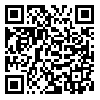Abstract: (56 Views)
Introduction: This study explores the role of Iranian media in shaping the discourse of the Right to the City, examining whether they serve as tools for public awareness or social control. Given the increasing signific ance of media in urban governance, this research applies Norman Fairclough’s Critical Discourse Analysis (CDA) to assess how different media platforms—official media, independent media, and civil society activists—construct narratives about urban rights and citizen participation.
Method: The study employs a three-level CDA framework—textual analysis, discursive processes, and social context analysis—applied to a dataset of 182 media texts published between 2001 and 2021. These texts were selected from both official state-controlled media and independent platforms, ensuring a comprehensive analysis of competing urban discourses. The research critically examines linguistic structures, ideological framing, and the socio-political contexts shaping media representations of urban rights.
Findings: The analysis reveals a stark contrast between official and independent media discourses. Official media predominantly frame the Right to the City within a security-oriented discourse, emphasizing terms such as “public order” and “social stability” to justify restrictive urban policies. In contrast, independent media and civil society activists advocate for a justice-oriented and participatory discourse, frequently using terms like “social justice,” “citizen engagement,” and “equitable access to urban resources.” Furthermore, digital media platforms play a critical role in challenging dominant state narratives and providing alternative spaces for public discourse.
Discussion: The study highlights the power dynamics shaping media discourse on urban rights in Iran. While state-affiliated media reinforce hegemonic narratives aligned with governmental policies, independent platforms serve as counter-hegemonic forces that amplify marginalized voices and advocate for participatory governance. The findings underscore the growing influence of digital media in urban activism, illustrating how technology facilitates grassroots mobilization and public awareness. This research contributes to the discourse on media and urban governance by emphasizing the need for greater media transparency, policy reforms, and enhanced citizen engagement to ensure a more inclusive representation of urban rights.
Method: The study employs a three-level CDA framework—textual analysis, discursive processes, and social context analysis—applied to a dataset of 182 media texts published between 2001 and 2021. These texts were selected from both official state-controlled media and independent platforms, ensuring a comprehensive analysis of competing urban discourses. The research critically examines linguistic structures, ideological framing, and the socio-political contexts shaping media representations of urban rights.
Findings: The analysis reveals a stark contrast between official and independent media discourses. Official media predominantly frame the Right to the City within a security-oriented discourse, emphasizing terms such as “public order” and “social stability” to justify restrictive urban policies. In contrast, independent media and civil society activists advocate for a justice-oriented and participatory discourse, frequently using terms like “social justice,” “citizen engagement,” and “equitable access to urban resources.” Furthermore, digital media platforms play a critical role in challenging dominant state narratives and providing alternative spaces for public discourse.
Discussion: The study highlights the power dynamics shaping media discourse on urban rights in Iran. While state-affiliated media reinforce hegemonic narratives aligned with governmental policies, independent platforms serve as counter-hegemonic forces that amplify marginalized voices and advocate for participatory governance. The findings underscore the growing influence of digital media in urban activism, illustrating how technology facilitates grassroots mobilization and public awareness. This research contributes to the discourse on media and urban governance by emphasizing the need for greater media transparency, policy reforms, and enhanced citizen engagement to ensure a more inclusive representation of urban rights.
Article number: 10
Keywords: critical discourse analysis, media discourse, Right to the city, social control, social justice.
Type of Study: orginal |
Received: 2024/11/24 | Accepted: 2025/03/12
Received: 2024/11/24 | Accepted: 2025/03/12
Send email to the article author
| Rights and permissions | |
 |
This work is licensed under a Creative Commons Attribution-NonCommercial 4.0 International License. |






